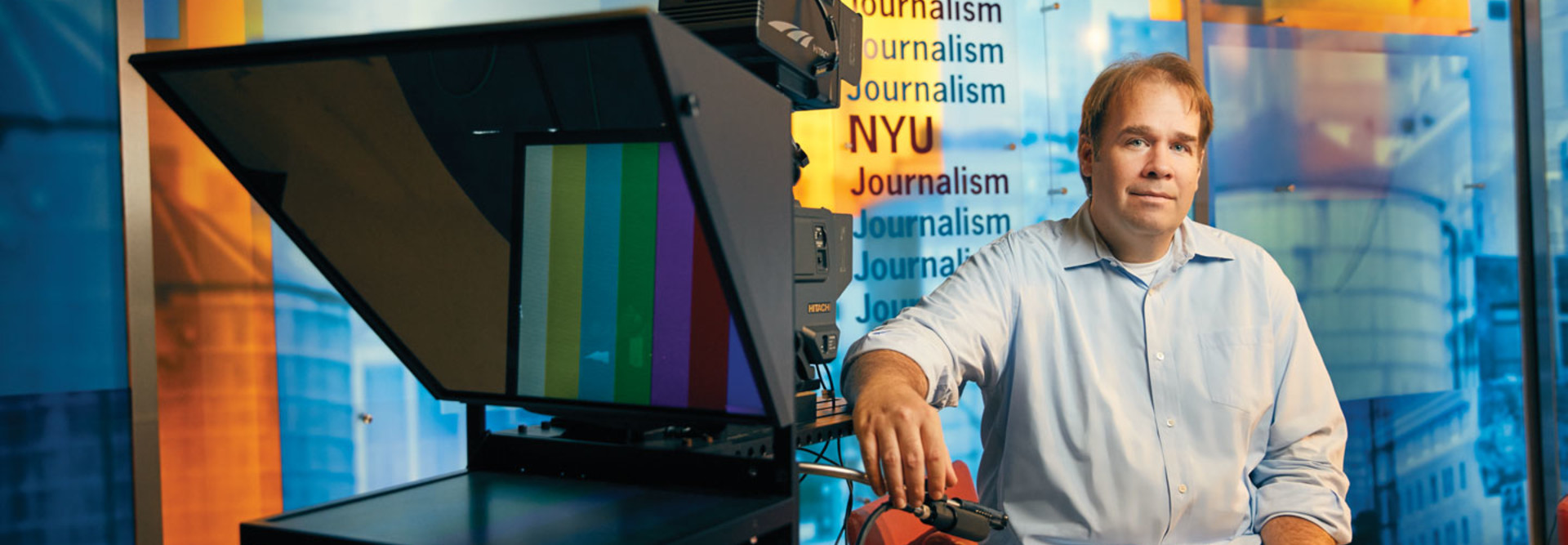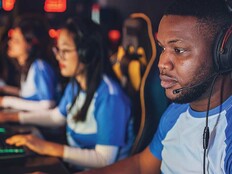Journalism Students Trade Reporters’ Notebooks for 3D Cameras and Data Analytics
April 26 of this year marked the 30th anniversary of the Chernobyl meltdown, the worst nuclear disaster in history. At New York University, student journalists were eager to report on the event, but they needed a novel approach to a subject that countless journalists have commemorated over the years, says Jason Maloney, a clinical associate professor at NYU’s Arthur L. Carter Journalism Institute.
“People have looked at the animals of Chernobyl, the survivors, the firefighters, the food — all these different reports,” he says.
The students decided to differentiate their reporting by the type of coverage they would create. Instead of a print or multimedia piece, they would create a video documentary using 360-degree cameras.
The result: Maloney and his graduate students filmed, with the help of PBS’s Frontline staff, “Return to Chernobyl.” To date, it has been viewed more than 2 million times.
For their fieldwork in Pripyat, the Ukrainian city a few miles from the Chernobyl plant, the students crafted a 360-degree camera by affixing six GoPro Hero4 cameras to a Freedom 360 mount and placing this contraption on top of a monopod. After filming, they edited their footage with Adobe Premiere Pro and Autopano software.
Putting Robots on the Beat
Next-generation technology is redefining the practice of news gathering and storytelling, as journalists create new formats and channels that match the way people consume information. These developments are radically changing journalism curricula and the way that faculty teach their students. According to one expert, J-schools that fail to keep pace with the industry’s evolution will become less relevant and less desirable.
“Access to an advanced media lab, where students can get their hands dirty with the basics of machine learning, logic, object recognition, mixed reality and data wrangling, is key to readying students for newsrooms of the future,” says Amy Webb, founder of the digital strategy firm Future Today Institute.
Soon, she says, instead of simply working as writers or producers, students will need the skills to take on titles such as botmaster, augmented-reality producer or automation experience designer.
“To be fair, you won’t see these jobs in today’s newsrooms,” Webb says. “But you will someday, and soon.”

SOURCE: American Press Institute, "Facing Change"
Getting the News Up to Speed
At the University of North Carolina, Chapel Hill, courses are changing to equip future journalists with the tools they’ll need in the workforce. Student interns at the Reese News Lab, for example, come up with new products and concepts for the journalism industry. The most viable ideas are pitched to media experts and could receive funding, says Steven King, an assistant professor at the university and the Lab’s executive director. In 2015, for example, the lab received $150,000 from the Knight News Challenge to develop Campaign Hound, a political reporting resource.
Since the Lab launched in 2012, students’ projects have explored virtual reality, data visualization and mobile app development, among other areas.
“One of our challenges right now is figuring out the future of broadcast journalism,” King says. “How are we going to create sustainable, viable storytelling?”
UNC’s J-school has several GoPro rigs and 360-degree drones. Through an alumnus, students also have access to Google’s Jump, a 360-degree camera system that creates immersive, virtual reality video. Staff plan to add the Facebook Surround 360 camera to its toolbox as soon as it becomes available.
“It’s hard for people who are turning around a 24/7 news stream to get up to speed on new technologies, so we’re giving the students the skills now,” King says.
Bringing New Systems on Board
Often, tools require a new approach to traditional skills. Students on NYU’s Chernobyl project faced an interviewing challenge during 360-degree filming. If a reporter stands in front of a subject to conduct an interview, that blocks the perspective of the filming rig. Similarly, UNC students hold practice sessions to get used to working while a robot camera operator follows them around.
For some J-schools, adding more robust cameras requires additional software and hardware. UNC is adding computing power to handle 360-degree video, including two custom-built PC towers with high-end graphics cards, King says. It’s also taking steps to plan and build a render farm.
NYU’s J-school acquired the Autopano Video and Autopano Giga software for stitching and Mettle Skybox Studio for on-screen titling.

Raising New Questions with Technology
Technology is introducing still another wrinkle to journalism: the question of ethics. Sean Mussenden, director of the Capital News Service and a lecturer in digital media, data visualization and computational journalism at the University of Maryland’s Philip Merrill College of Journalism, says cutting-edge capabilities raise questions that journalists haven’t confronted before.
“One of the most interesting ones is the effect of virtual reality,” he says. “There are a lot of ethical decisions that go into what to shoot or not shoot with a regular camera. If you’re shooting a tornado scene with a traditional camera, you can think about what not to capture, whereas with 360 video, you’re getting the whole scene, no matter what.”
Data analytics and visualization pose another dilemma. University of Maryland students are partnering with a large healthcare provider to aggregate and analyze millions of hospital records, with the goal of identifying trends and storylines and creating interactive maps.
“Every time someone goes to the hospital, their data is collected — what conditions they have, their procedures, their race,” Mussenden says.
Even if analysts don’t capture individual names, when a subset gets small enough, the potential exists to identify people. “We store all that data on PCs not connected to the internet, but there are always concerns,” says Mussenden.
A Public Service for Viewers and Readers
Today’s journalists have access to unprecedented capabilities, and with them come new challenges. What makes the evolution worthwhile, says Webb, are the benefits these tools deliver to viewers, readers and listeners.
“If you grew up reading the news only on the internet, your perspective about content delivery will differ greatly from someone who’s used to listening to a radio news broadcast every morning,” she says. “Technology is explicitly tied to who we are and how we learn.”









